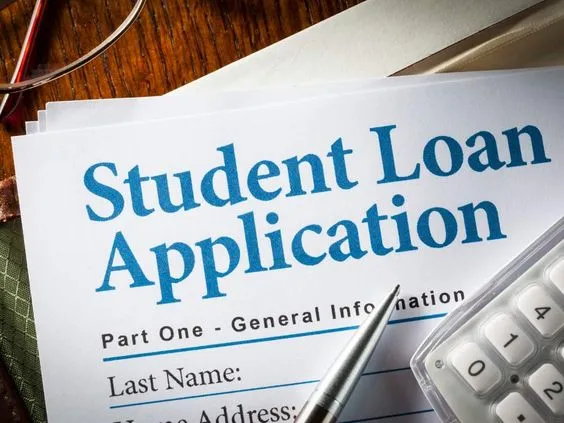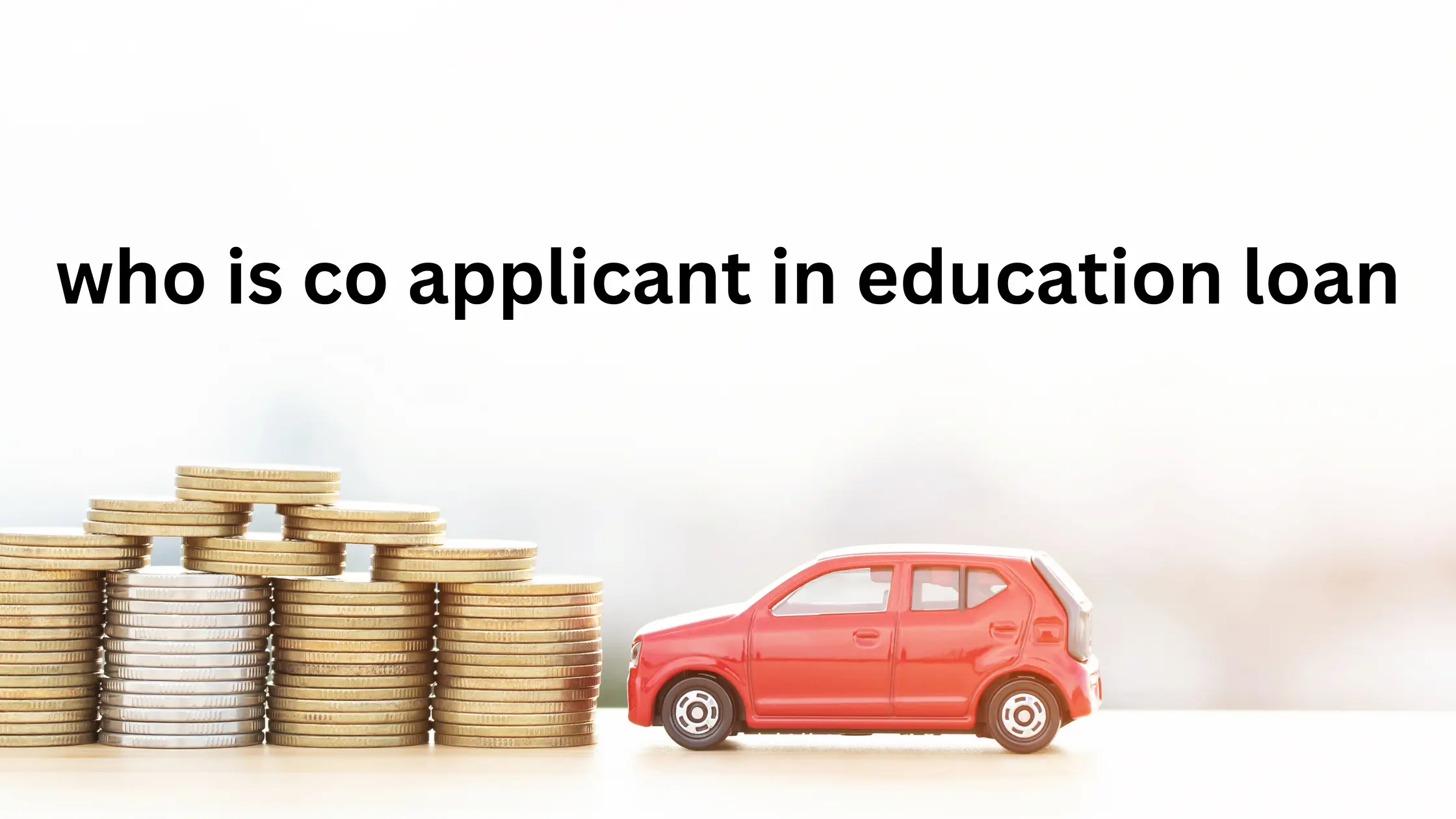Are you considering taking out an education loan to finance your studies? If so, you’ve probably come across the term “co-applicant” during your research. But who exactly is a co-applicant, and why are they important in the education loan process? In this comprehensive guide, we’ll break down everything you need to know about co-applicants in education loans.
An education loan can be a crucial lifeline for students pursuing higher studies. However, when applying for such a loan, you’ll often encounter the term “co-applicant.” So, who exactly is a co-applicant, and why do you need one? Let’s break it down.
What is a Co-Applicant?
A co-applicant, also known as a co-borrower, is an individual who applies for a loan alongside the primary applicant. In the case of education loans, the student is typically the primary applicant, while a parent, guardian, or other eligible person serves as the co-applicant.
The co-applicant shares equal responsibility for repaying the loan with the primary applicant. This means that if the primary applicant (the student) is unable to make payments, the co-applicant becomes liable for repaying the loan.

Role of a Co-Applicant
- Collaboration: A co-applicant collaborates with the student borrower to seek an education loan. They play a vital role in the application process.
- Financial Security: For students without an established credit history, having a co-applicant is essential. Why? Because it provides an additional layer of financial security for the lender. If the primary borrower (usually the student) faces difficulties in repaying the loan, the co-applicant steps in to ensure repayment. This reduces the lender’s risk and increases the chances of loan approval.
- Co-Signer: A co-applicant is also referred to as a co-signer. Essentially, they guarantee the debt. If the applicant fails to repay the education loan, it becomes the responsibility of the co-applicant to bear the repayment burden.
Types of Co-Applicants
- Primary Co-Applicants: Students often include their parents as co-applicants, regardless of their financial status. Public banks usually accept retired individuals or those with irregular incomes as primary co-applicants.
- Financial Co-Applicants: When students can’t choose individuals with stable incomes as primary co-applicants, financial co-applicants come into play. These individuals must be blood relatives (first cousins, immediate family members, paternal uncles/aunts, or maternal uncles/aunts). They must demonstrate consistent income and provide the necessary documentation.
Eligibility Criteria for Co-Applicants
- Blood Relatives: Co-applicants must be blood relatives of the student. While some lenders require immediate family members (parents or siblings), others accept indirectly related co-applicants (cousins or parent-in-law).
- Sufficient Income: Co-applicants need sufficient income to afford loan repayment.
Why Do Education Loans Require Co-Applicants?
You might wonder why education loans often require a co-applicant. There are several reasons for this:
- Credit History: Most students don’t have an established credit history, making it difficult for lenders to assess their creditworthiness. A co-applicant with a good credit score can increase the chances of loan approval.
- Income Requirement: Lenders want to ensure that the loan can be repaid. Since students typically don’t have a steady income, a co-applicant with a stable job and income provides additional financial security.
- Risk Mitigation: By having a co-applicant, the lender reduces their risk. If the student is unable to repay the loan, they have another party to turn to for repayment.
- Larger Loan Amounts: With a creditworthy co-applicant, students may qualify for higher loan amounts, which can be crucial for covering expensive education costs.
Also See: What is Miscellaneous Insurance?
Who Can Be a Co-Applicant for an Education Loan?
While the specific requirements may vary depending on the lender, here are some common categories of individuals who can typically serve as co-applicants for education loans:
- Parents: This is the most common type of co-applicant. Parents often step in to support their children’s education financially.
- Legal Guardians: If the student doesn’t have parents, their legal guardian can act as a co-applicant.
- Siblings: In some cases, older siblings with a stable income and good credit history can be co-applicants.
- Spouse: For married students, a spouse can serve as a co-applicant.
- Other Relatives: Some lenders may allow grandparents, aunts, uncles, or other close relatives to be co-applicants.
- Non-relatives: In rare cases, some lenders might consider non-relatives as co-applicants, but this is less common and may require additional scrutiny.
Responsibilities of a Co-Applicant
Being a co-applicant is a significant responsibility. Here are the key duties and obligations of a co-applicant in an education loan:
- Loan Repayment: The co-applicant is equally responsible for repaying the loan. If the student fails to make payments, the co-applicant must step in.
- Credit Impact: The loan will appear on the co-applicant’s credit report. Timely payments can boost their credit score, while missed payments can harm it.
- Financial Disclosure: Co-applicants must provide detailed financial information, including income, assets, and existing debts.
- Long-term Commitment: Education loans often have long repayment terms, sometimes spanning 10-15 years or more. Co-applicants must be prepared for this long-term financial commitment.
- Communication: Co-applicants should maintain open communication with the primary applicant about loan details, repayment plans, and any financial difficulties.

Pros and Cons of Being a Co-Applicant
Let’s look at the advantages and disadvantages of being a co-applicant for an education loan:
Pros:
- Helps the student secure necessary funding for education
- This may result in better loan terms, including lower interest rates
- Demonstrates financial support for the student’s academic goals
- Can strengthen the relationship between the co-applicant and the student
Cons:
- Shared financial responsibility for a potentially large debt
- Impact on the co-applicants credit score and debt-to-income ratio
- This may affect the co-applicant ability to obtain other loans in the future
- Potential strain on relationships if repayment becomes an issue
Comparison of Education Loan Terms With and Without a Co-Applicant
| Criteria | With Co-Applicant | Without Co-Applicant |
|---|---|---|
| Loan Approval Chances | Higher | Lower |
| Interest Rates | Lower | Higher |
| Loan Amount | Higher | Lower |
| Repayment Terms | More Flexible | Less Flexible |
| Collateral Requirement | Often Waived or Reduced | Usually Required |
| Processing Time | Faster | Slower |
FAQs about Co-Applicants in Education Loans
1. Who can be a co-applicant for an education loan?
Typically, close family members such as parents, guardians, spouses, or siblings can be co-applicants. Some lenders may also allow other relatives like uncles, aunts, or grandparents, depending on their policies.
2. Is it mandatory to have a co-applicant for an education loan?
While it is not always mandatory, having a co-applicant is highly recommended as it increases the chances of loan approval and can secure better loan terms.
3. What documents are required from the co-applicant?
The co-applicant needs to provide proof of identity (such as a passport or driver’s license), proof of address, income proof (salary slips, bank statements, tax returns), and a credit report.
4. Can a student have more than one co-applicant?
Generally, lenders allow only one co-applicant per education loan. However, some lenders might consider having multiple co-applicants under special circumstances.
5. What happens if the co-applicant has a poor credit history?
If the co-applicant has a poor credit history, it might negatively impact the loan approval process. The lender might either reject the loan application or offer it at a higher interest rate. It is advisable to choose a co-applicant with a good credit score.
6. Can the co-applicant be changed during the loan tenure?
Changing a co-applicant during the loan tenure is generally difficult and requires approval from the lender. This might be considered under special circumstances like the death of the co-applicant or significant financial changes.
7. What are the risks for a co-applicant?
The primary risk for a co-applicant is the responsibility to repay the loan if the primary borrower defaults. This can affect the co-applicant’s credit score and financial stability.
8. Can the co-applicant avail of tax benefits on the education loan?
Yes, both the primary borrower and the co-applicant can avail of tax benefits on the interest paid on the education loan under Section 80E of the Income Tax Act in India.
Conclusion
In summary, a co-applicant is your financial ally in the education loan journey. They enhance your chances of loan approval and provide peace of mind for both you and the lender. So, when applying for an education loan, consider choosing a reliable co-applicant to support your dreams! 🌟

Alisha Ray is the founder and chief editor of MoneyCocktail.com, a leading resource for finance, insurance, and share market insights. With a passion for empowering individuals to make informed financial decisions, Alisha combines her extensive knowledge and practical experience to provide clear, actionable advice.

